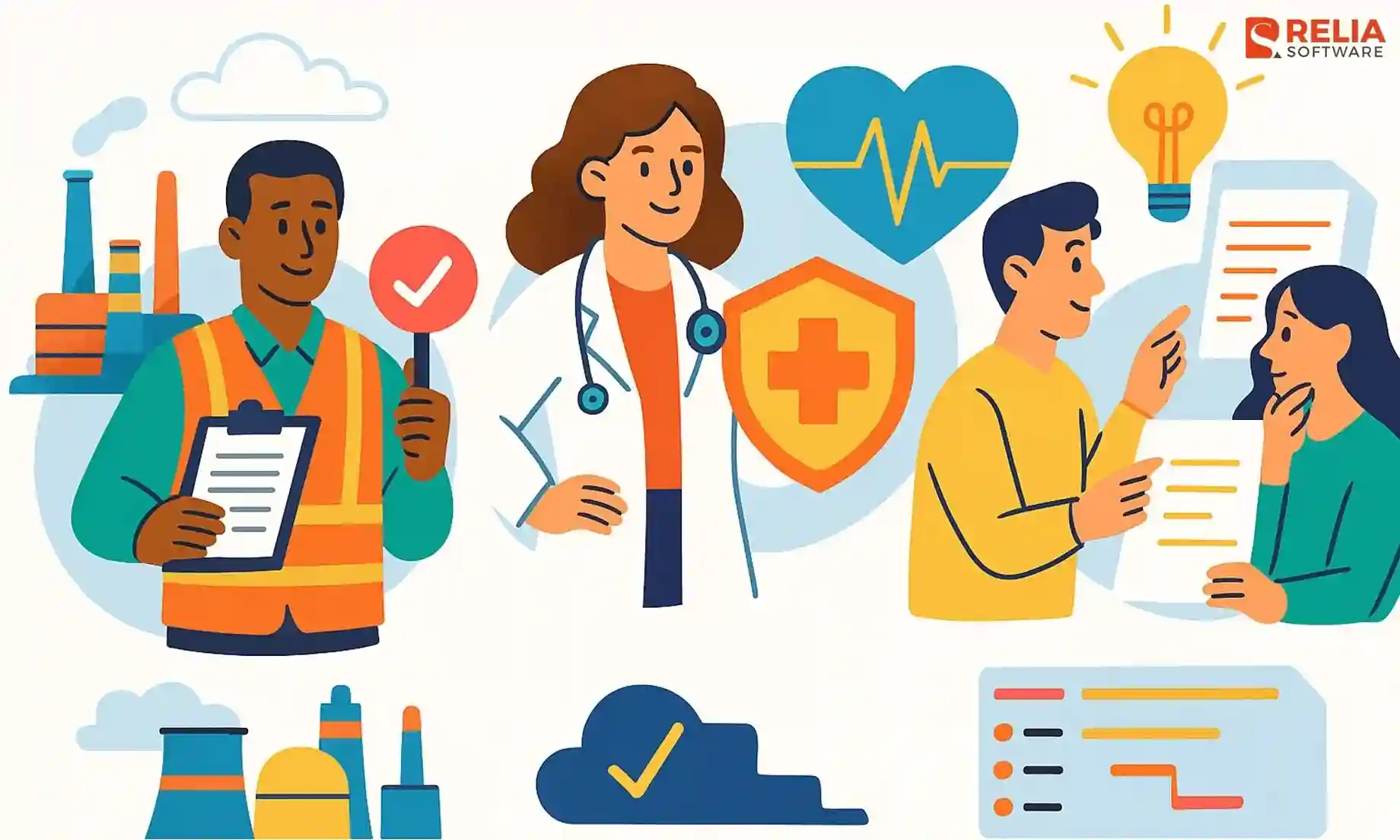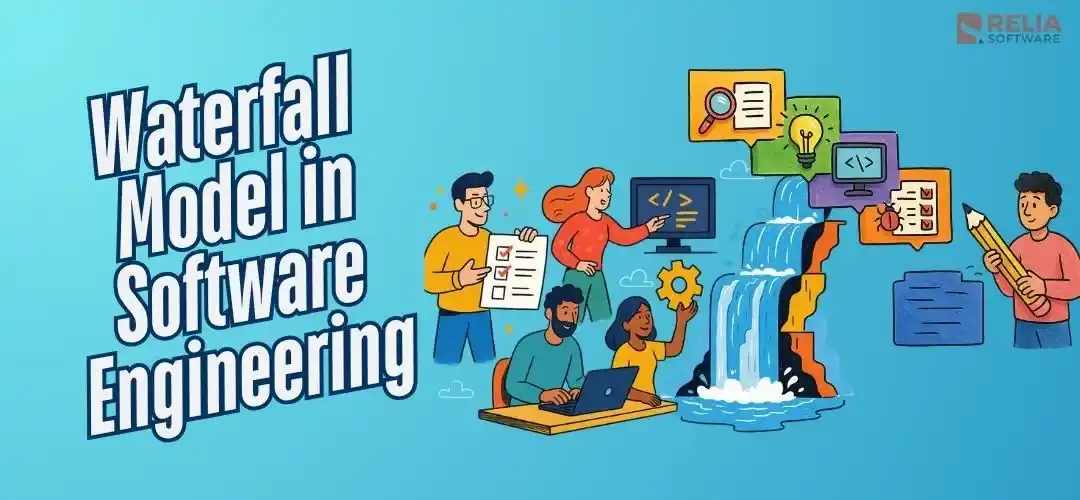In software engineering, the Waterfall Model is the fundamental software development life cycle (SDLC). There is another name for this model: a linear-sequential life cycle model. It is simple to understand and use. In a Waterfall Model, one step must be finished before the next one can begin. The steps do not build on top of each other.
This blog post will go into detail about the Waterfall Model's features, stages, pros and cons, and other things. Look at it now!
>> Read more: 8 Software Development Life Cycle (SDLC) Methodologies
What is the Waterfall Model in Software Engineering?
The Waterfall Model is a structured, step-by-step way to make software. It is usually used for big projects with clear objectives. It is different because it manages projects and makes software in a methodical, sequential way.
When the project clearly has goals and requirements, this method is helpful. Large-scale projects with extensive timelines and a limited margin for errors usually benefit from it.
>> Read more: What is the V Model in Software Development?
Key Features of Waterfall Model
Usually, when software development calls for highly methodical and ordered approach, the Waterfall Model is applied. It guarantees that difficult projects may be completed with great quality, on schedule, and on budget. You should take some important note of the following salient characteristics of the Waterfall Model:
- Sequential Approach: The Waterfall Model creates software one step at a time, with each part of the project finished before moving on to the next.
- Approach Based on Documents: The Waterfall Model needs a lot of paperwork to make sure the project is well-defined and the team is working toward clear goals.
- Quality Check: Testing and quality check are very important at every stage of the project in the Waterfall Model. This ensures the final result fulfills stakeholder expectations.
- Carefully Planning: The Waterfall Model uses a somewhat meticulous planning technique. This process lists and monitors the project's goals, timeframes, and deliverables throughout its existence.
6 Phases of Waterfall Model in Software Engineering
When making software, the Waterfall Model uses a strict, step-by-step process, with each part building on the last. Let's look more closely at each important step to get a better sense of this method.
Requirement Gathering
This first step involves carefully gathering, analyzing, and documenting all the functions, features, and client’s expectations. At this stage, surveys, workshops, and user interviews are used to make sure that all stakeholders have a clear and comprehensive understanding of the project's goals and scope.
System Design
The system design step turns the requirements into a detailed technical plan once the requirements are gathered clearly. Architects plan the general structure of a system, including hardware, software, network infrastructure, and data flow. Developers can use this model as a guide during the coding stage.
Development
Once developers have a clear plan, they can start building the software application. They write code, integrate various components, and follow the pre-established coding standards. Unit testing, in which separate pieces of code are checked for functionality, is very important at this point.
Testing
After development, the software is put through a lot of tests to make sure it works as planned and meets the requirements. In this phase, testers do different kinds of testing, such as system testing, user experience testing, and integration testing.
>> Read more:
- Detailed Explanation of 7 Software Testing Principles
- Security Testing in Software Testing
- What is Unit Testing?
- Top 6 Automation Testing Tools for Businesses
- Top 10 Best End-to-End Testing Tools and Frameworks
Deployment
After all the tests are done, the software is finally deployed to the production environment, where end users can access it. Depending on the project specifics, this phase could include server setup, data migration, and user training.
>> Read more:
- 6 Deployment Strategies for Smooth Software Updates
- On-Premise vs Cloud Deployment: What is the Difference?
- A Comprehensive Guide To On-Premise Deployment For Businesses
- Top 9 Best DevOps Deployment Tools for Businesses
Maintenance
The Waterfall Model doesn't end with deployment. During the maintenance phase, fixing bugs and user-reported problems and adding new features or functions are needed. This ongoing process ensures the software remains functional, secure, and up-to-date.
>> Read more: The Importance Of Software Maintenance

Pros & Cons of Waterfall Model in Software Engineering
Here is the analysis of the advantages and disadvantages of the Waterfall Model in software engineering.
Pros
The Waterfall Model is a traditional model, but it still has some benefits to be a good choice for some software development projects. Let's look at some important benefits:
Structured and Organized
The Waterfall Model's step-by-step approach makes it easy to plan and handle projects because it follows a clear path. Deliverables and due dates are laid out for each step, so everyone knows what their role is and what is expected from them.
Clear Documentation
During the whole process, a lot of documents are made to keep track of requirements, design specifications, and test outcomes. This complete documentation is a valuable resource for future maintenance and modifications.
Predictable Costs and Timelines
The Waterfall Model makes it easier to predict costs and timelines when there is a clear plan from the start. This is especially helpful for projects that have to stick to a tight budget.
Reduced Errors
Because the steps in the Waterfall Model are done in order, mistakes are less likely to spread to later stages. Problems are found and fixed earlier in the development lifecycle.
Efficient for Well-Defined Projects
When project needs are clear and not likely to change much, the Waterfall Model can be a very effective way to do things. It speeds up growth by getting rid of the need to adapt all the time.
Cons
The Waterfall Model has some good points, but it also has some problems. Here are some typical downsides that you must think about:
Inflexibility
In the Waterfall Model, it can be hard to adapt to evolving needs. Once a phase is finished, backtracking and making changes can be complex and expensive. This inflexibility can be a problem for projects where needs may change over time.
Limited User Feedback
Getting feedback from users is mostly done during the initial part of gathering requirements. Users don't have many chances to give feedback during the development process, which leads to software that doesn't fully meet users' needs.
Late Stage Defects
Testing comes at the end of the development process, so finding and fixing major bugs at this point can be expensive and take a lot of time. This could cause the project to take longer than planned and possibly mess up the launch dates for products.
Not Ideal for Complex Projects
The Waterfall Model is very solid, which can be a problem for very complicated tasks with unclear requirements. It's possible that the model won't be able to handle the need for constant iteration and change.
Limited Collaboration
The Waterfall Model can lead to siloed teams, with each phase working independently. This can hinder communication and collaboration among teams working on the same project.
When To Use Waterfall Model in Software Engineering?
Highly Regulated Industries
In some fields with strict rules, the standards are clear from the start and don't change requirements much. In this case, the structured approach of the Waterfall Model method can help with compliance because it focuses on lowering mistakes and making sure inspectors can easily follow the process. It fits nicely with the need for safety, predictability, and being able to be checked in these areas.
The Waterfall Model is often used in government and defense projects for two main reasons: strict adherence to standards and careful oversight. The steps in the Waterfall Model make sure there is clear paperwork and a trail that can be checked, which is required by strict government contracting rules. It also works well with the need for clear plans and few surprises in projects that are held to a high level of public responsibility.
Safety-Critical Systems
Because of its emphasis on thorough planning and upfront testing, the Waterfall Model works well for safety-critical systems that ensure keeping mistakes to a minimum and executing tests thoroughly.
Because mistakes in these systems can have bad results, keeping detailed records and tracking things in systems regularly are essential for showing compliance and lowering risks
Projects with Clear and Stable Requirements
Projects that use the Waterfall Model need to know exactly what the project's goals and limits are. This is because the model does things in a certain order. The phase-based method of the Waterfall model makes planning, development, and testing go more smoothly because needs are known from the start. There are no more changes in requirements. Also, the Waterfall Model works well for straight and stable needs projects. These conditions can't be changed after a step is done.
While agile methods are open to change, waterfall works best for projects that are known to go to plan. If you have a clear vision from the start, you won't have to redo earlier stages because need to be changed. This makes development go more smoothly and in a straight line.

Conclusion
The Waterfall Model in software engineering is an organized and predictable way to make software, which makes it a good choice for some projects. However, because it is so rigid, it might not work in all cases. Therefore, it is important to analyze and understand its benefits, drawbacks, and use cases to decide the most appropriate method for your project.
Hope this blog helps you understand clearly the Water Model in software engineering!
>>> Follow and Contact Relia Software for more information!
- development

